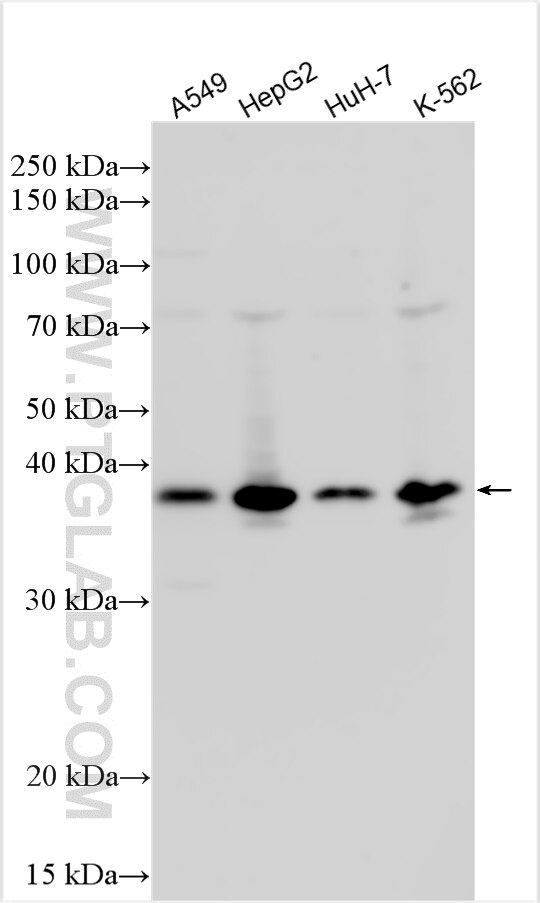E2F6 Polyklonaler Antikörper
E2F6 Polyklonal Antikörper für WB, ELISA
Wirt / Isotyp
Kaninchen / IgG
Getestete Reaktivität
human
Anwendung
WB, ELISA
Konjugation
Unkonjugiert
Kat-Nr. : 10691-1-AP
Synonyme
Geprüfte Anwendungen
| Erfolgreiche Detektion in WB | A549-Zellen, HepG2-Zellen, HuH-7-Zellen, K-562-Zellen |
Empfohlene Verdünnung
| Anwendung | Verdünnung |
|---|---|
| Western Blot (WB) | WB : 1:500-1:2000 |
| It is recommended that this reagent should be titrated in each testing system to obtain optimal results. | |
| Sample-dependent, check data in validation data gallery | |
Produktinformation
10691-1-AP bindet in WB, ELISA E2F6 und zeigt Reaktivität mit human
| Getestete Reaktivität | human |
| Wirt / Isotyp | Kaninchen / IgG |
| Klonalität | Polyklonal |
| Typ | Antikörper |
| Immunogen | E2F6 fusion protein Ag1029 |
| Vollständiger Name | E2F transcription factor 6 |
| Berechnetes Molekulargewicht | 32 kDa |
| Beobachtetes Molekulargewicht | 37 kDa |
| GenBank-Zugangsnummer | BC008348 |
| Gene symbol | E2F6 |
| Gene ID (NCBI) | 1876 |
| Konjugation | Unkonjugiert |
| Form | Liquid |
| Reinigungsmethode | Antigen-Affinitätsreinigung |
| Lagerungspuffer | PBS with 0.02% sodium azide and 50% glycerol |
| Lagerungsbedingungen | Bei -20°C lagern. Nach dem Versand ein Jahr lang stabil Aliquotieren ist bei -20oC Lagerung nicht notwendig. 20ul Größen enthalten 0,1% BSA. |
Hintergrundinformationen
E2F6 is a member of the E2F family of transcription factors, which play important roles in cell cycle regulation and gene expression. E2F6 is highly expressed in many types of cancer and is associated with poor prognosis. It is involved in the regulation of cell proliferation and can promote tumor growth. E2F6 knockdown significantly reduces the proliferative ability of glioma cells (PMID: 38071912). Additionally, E2F6 is related to immune activation markers, tumor immune cell infiltration, and immune regulators, making it a potential biomarker for predicting the response to cancer immunotherapy.
Protokolle
| PRODUKTSPEZIFISCHE PROTOKOLLE | |
|---|---|
| WB protocol for E2F6 antibody 10691-1-AP | Protokoll herunterladen |
| STANDARD-PROTOKOLLE | |
|---|---|
| Klicken Sie hier, um unsere Standardprotokolle anzuzeigen |


